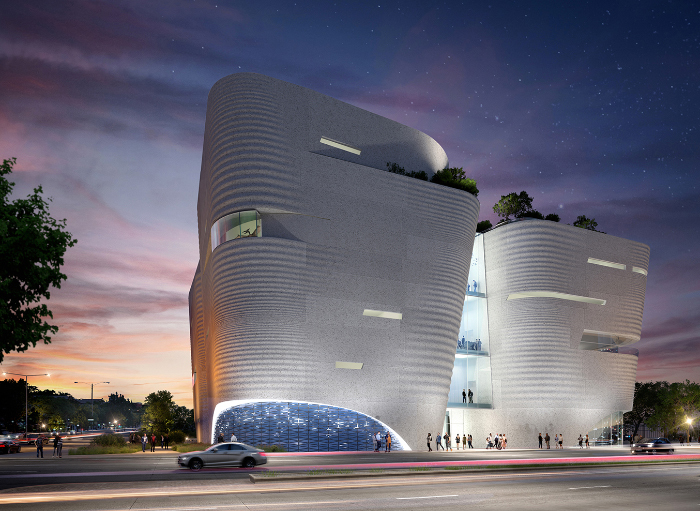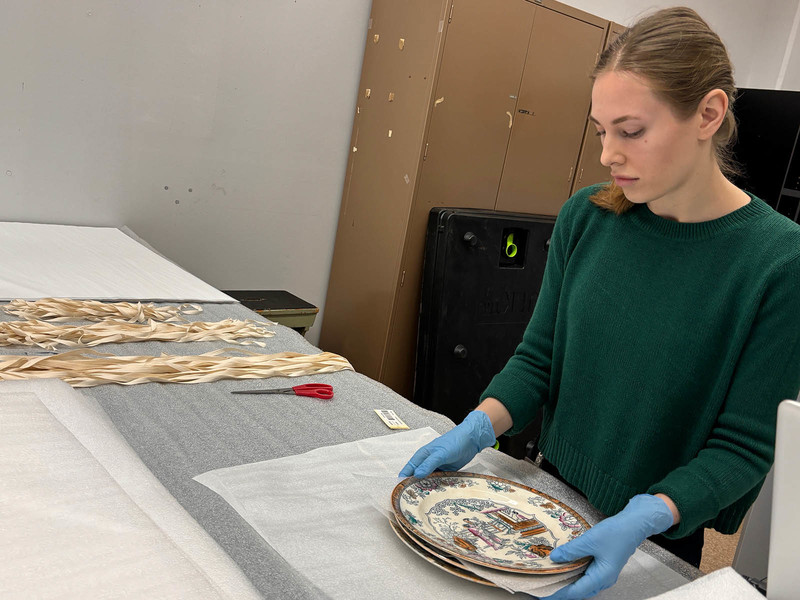This one’s for reader Mark Zimmerman, who asks, "Do you remember the junk pile exhibit at the Milwaukee Public Museum? It was like a found objects art sculpture with old rusty shopping carts and TV antennas, etc., in it, and it even had water running through it with the floor painted orange to resemble rust. It was pretty cool, and I've missed it since they removed it many years ago."
I asked the museum’s Carrie Trousil Becker, who said, "This exhibit, called ‘Urban Habitat,’ is the exhibit that we get asked about most frequently via social media, and people particularly reminisce about the giant trash pile."
"The Urban Habitat: The City and Beyond" opened in October 1976 on the museum’s second floor in a 5,000-square foot area in the southwest corner (now the special exhibitions gallery, I believe) and was a hit. It was part of the museum’s program to celebrate the American bicentennial.
Upon the exhibit’s opening, the Sentinel talked to the museum’s curator of anthropology Nancy Oestreich Lurie, who was instrumental in creating "The Urban Habitat."
"Originally," the paper wrote, "the exhibit was to have been of Wisconsin resources, (Lurie) said. But since resources have already been explored in the museum’s Hall of Life and the biology exhibits, the decision was made to turn the new section into an environmental hall.
"Museums in other parts of the country have attempted to design urban and environmental exhibits, she said, and may of them have failed. So Mrs. Lurie and other members of a museum subcommittee decided that Milwaukee should offer something unique and innvoative."
What the museum built was a survey of urban development, from hunters and gatherers living in rock shelters to the (then-) present, represented by "Where Do I Plug It In?" – a wall of electric appliances. In between were the Godspeed – a reproduction of Capt. John Smith’s vessel, representing the European settlement of the New World – machines and water wheels that fueled the industrial revolution, and that ginormous junk pile, a sign of the pollution crisis afflicting the modern world.
The junk pile had a name, too. It was officially called "The Unexpected Dilemma of Progress," though I’ve also seen it referred to as "Mt. Trashmore" and most typically, simply "The Junkpile."
"The Junkpile contains a stratigraphic cross section of American life from the turn of the century into the 1970s. It is a concept central to the Urban Habitat theme," wrote the museum’s Marion Davison in a chapter that appeared a museum trade publication.
According to the Sentinel, "in order to allow visitors an opportunity to reflect on what they have just seen and experienced, they will leave the (exhibition) along a dark theater-like ramp before entering the other exhibit areas."
In 1977, the museum published a 14-page booklet to accompany the exhibit.
Davison also wrote of the popularity of the exhibit, which seems to have sometimes escaped the consciousness of decision-makers.
"The Urban Habitat and the Pre-Columbian Mezzanine are located in obscure areas of the museum and are acknowledged as low attendance sections," wrote Davison. "Only the guards were aware that one of the large exhibits in the Urban Habitat entitled the Junkpile ("When It Comes to Waste, Americans are King of the Mountain!") was extremely popular. People often requested directions to reach the exhibit hall.
"After sharing information about the exhibit with me, the guard discussed ideas for identifying the contents of the hall more clearly to raise public awareness and attention."
Perhaps that misperception offers a clue to why "The Urban Habitat" was closed and dismantled around 1988.
Born in Brooklyn, N.Y., where he lived until he was 17, Bobby received his BA-Mass Communications from UWM in 1989 and has lived in Walker's Point, Bay View, Enderis Park, South Milwaukee and on the East Side.
He has published three non-fiction books in Italy – including one about an event in Milwaukee history, which was published in the U.S. in autumn 2010. Four more books, all about Milwaukee, have been published by The History Press.
With his most recent band, The Yell Leaders, Bobby released four LPs and had a songs featured in episodes of TV's "Party of Five" and "Dawson's Creek," and films in Japan, South America and the U.S. The Yell Leaders were named the best unsigned band in their region by VH-1 as part of its Rock Across America 1998 Tour. Most recently, the band contributed tracks to a UK vinyl/CD tribute to the Redskins and collaborated on a track with Italian novelist Enrico Remmert.
He's produced three installments of the "OMCD" series of local music compilations for OnMilwaukee.com and in 2007 produced a CD of Italian music and poetry.
In 2005, he was awarded the City of Asti's (Italy) Journalism Prize for his work focusing on that area. He has also won awards from the Milwaukee Press Club.
He has be heard on 88Nine Radio Milwaukee talking about his "Urban Spelunking" series of stories, in that station's most popular podcast.







